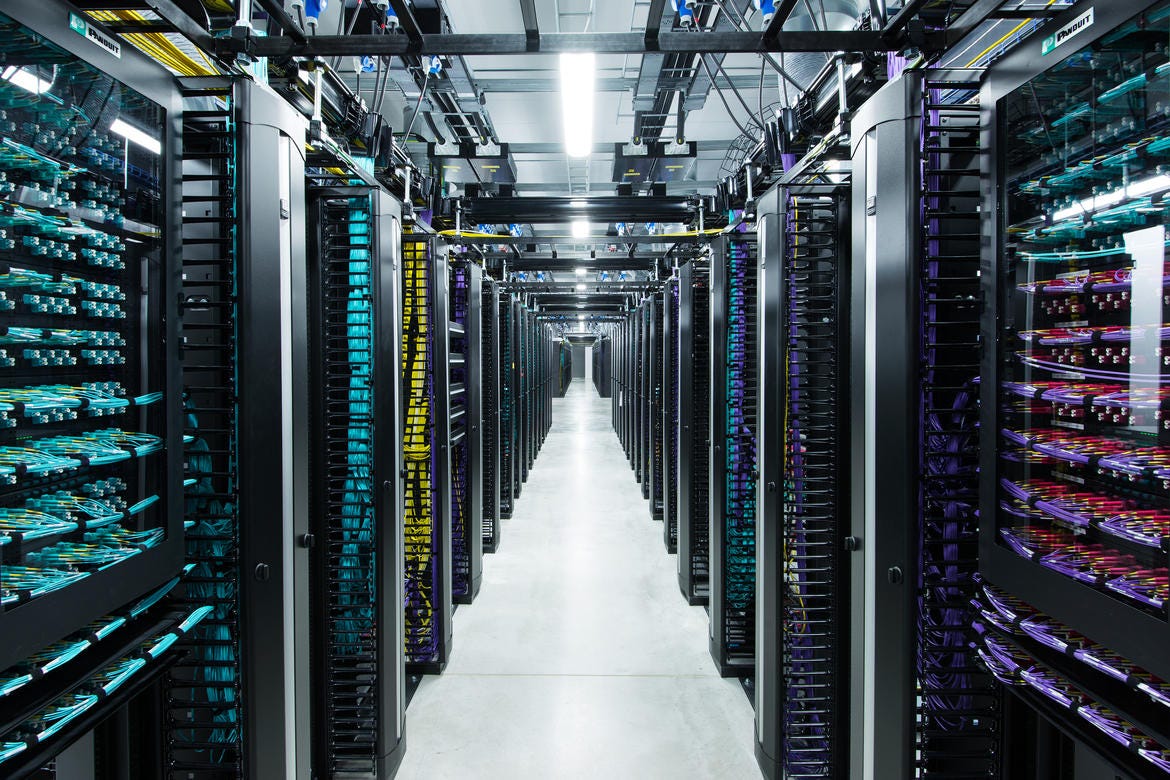It’s an IT-driven world! Every detail counts when it comes to optimizing data center operations. Among the most crucial yet often underestimated components is the “data center rack.” These racks, designed to house and organize servers, networking equipment, and storage devices, are far more than just storage solutions. They are the backbone of efficient data centers, providing a structured environment that ensures easy access to hardware, reduces clutter, and supports better airflow management. This improves cooling efficiency, preventing hardware overheating and extending the lifespan of costly equipment.
Understanding the importance of data center racks goes beyond just their physical function. They contribute significantly to system performance, energy efficiency, and even operational security. In this article, we’ll explore why data center racks are indispensable in creating streamlined, high-performance environments and how their design choices impact the overall effectiveness of your data center infrastructure management. Keep reading it in Danacloud to discover how racks can enhance your data center strategy.
Here’s a table summarizing the key points about Data Center Racks and their components:
| Category | Details |
|---|---|
| Definition of Data Center Rack | A standardized framework used to house and organize IT equipment, such as servers and networking devices. |
| Main Components of Data Center Rack | – Rack Frame: Structural skeleton (typically metal) that defines dimensions and provides support. – Mounting Rails: Installed inside the frame for securing equipment like servers and switches. – Patch Panels: Manage network connections and reduce cable clutter. – Cable Management Systems: Trays, ties, and organizers to route cables efficiently and improve airflow. – Power Distribution Units (PDUs): Distribute electrical power with surge protection and monitoring features. – Cooling Systems: Integrated cooling solutions like fans to maintain optimal operating temperatures. – Blanking Panels: Fill unused rack spaces to maintain airflow and cooling efficiency. |
| Rack Mechanical Characteristics | – Weight Capacity: Varies based on equipment size, important for supporting servers and storage devices. – Rack Height: Measured in “U” (rack units), a standard rack is 42U high, with custom sizes available. – Depth: Varies from 600mm to 1200mm to accommodate equipment with different sizes and airflow needs. – Material Strength: Typically made of steel or aluminum, providing durability and resistance to vibrations and impacts. – Ventilation and Airflow: Designed for optimal air circulation through open frames or perforated doors to prevent overheating. |
| Benefits of Data Center Racks | – Space Optimization: Efficient use of space, ensuring a clean, organized environment. – Improved Airflow and Cooling: Proper design minimizes overheating risks, extending equipment life. – Simplified Cable Management: Organized cables improve airflow and reduce maintenance complexity. – Enhanced Security and Access: Structured racks allow for easier access and security measures. |
| Choosing the Right Data Center Rack | – Consider Equipment Size: Match rack height, depth, and weight capacity with your equipment’s requirements. – Airflow Needs: Ensure the rack design supports proper ventilation, especially for high-performance equipment. – Future Scalability: Plan for future growth by selecting racks that can accommodate additional equipment. |
| Types of Data Center Racks | – Open-frame racks: Ideal for environments with easy access and efficient airflow. – Server racks: Often enclosed or partially enclosed for better security and airflow. – Enclosed racks: Offer better security and control over airflow, especially in environments where equipment needs protection. |
| Customization Options | Racks can be customized in size, color, depth, and additional features such as cable management or cooling solutions. |
| Contribution to Energy Efficiency | Racks support optimal airflow, reducing the need for excessive cooling systems, thus lowering energy consumption. Additionally, energy-efficient PDUs and rack designs can further contribute to energy savings. |
What Does Data Center Rack Mean?
A data center rack is a standardized framework (physical) used to house and organize servers, storage devices, and networking equipment within a data center. These racks ensure efficient use of space, improve airflow for cooling, and simplify cable management, which is crucial for maintaining system performance and reducing overheating risks. Racks also support security and easy maintenance by providing structured access to equipment. Proper rack organization is essential for optimizing data center operations and minimizing downtime.
Components of data center rack
Here are the main components of a rack in the types of data center, which makes it perfect for managing the infrastructure.
- Rack Frame: The structural skeleton, typically made of metal, provides support and defines the rack’s dimensions.
- Mounting Rails: Installed inside the frame, these rails allow for the secure attachment of equipment such as servers and switches.
- Patch Panels: Devices that manage network connections, facilitating organized cable routing and reducing clutter.
- Cable Management Systems: Includes cable trays, ties, and organizers that ensure orderly cable routing, improving airflow and simplifying maintenance.
- Power Distribution Units (PDUs): Devices that distribute electrical power to the equipment within the rack, often featuring surge protection and monitoring capabilities.
- Cooling system Solutions: Fans or cooling units integrated into the rack to maintain optimal operating temperatures for the equipment.
- Blanking Panels: Panels used to fill unused rack spaces, preventing airflow disruption and maintaining cooling efficiency.
These components work together to ensure that data center racks provide a secure, organized, and efficient environment for IT infrastructure.
Rack mechanical characteristics
Rack mechanical characteristics are crucial in determining the performance and durability of a data center rack. These characteristics include:
- Weight Capacity: Racks are designed to support heavy loads, with weight capacities varying based on the type of equipment they house. It’s important to ensure that the rack can support the weight of servers, storage devices, and other hardware.
- Rack Height: Measured in “U” (rack units), the height defines how much equipment a rack can hold. A standard rack is 42U high, but custom sizes are available to meet specific needs.
- Depth: Racks come in various depths, typically ranging from 600mm to 1200mm, accommodating different types of equipment with varying depths for optimal fit and airflow.
- Material Strength: Most racks are made of steel or aluminum, which provide structural integrity and ensure the rack can withstand vibrations, impacts, and environmental conditions without warping.
- Ventilation and Airflow: Racks are designed with open-frame structures or perforated doors to allow air circulation, preventing equipment from overheating and ensuring energy-efficient cooling.
Read more: What Is Data Center Capacity Planning?
Final Thoughts
In conclusion, data center racks are fundamental to the organization, efficiency, and longevity of IT infrastructure. Their mechanical characteristics, such as weight capacity, height, depth, and material strength, ensure that they can securely house and support a wide range of equipment. Proper ventilation and airflow management are key to maintaining optimal temperatures and preventing overheating. By understanding and selecting the right rack for specific needs, businesses can maximize space, enhance system performance, and reduce downtime. Ultimately, investing in quality racks is essential for creating a stable and efficient data center environment.
FAQ
How do I choose the right data center rack for my needs?
Selecting the right rack depends on your equipment’s size, weight, and cooling needs. Consider factors like rack height (U), depth, airflow requirements, and future expansion plans to ensure optimal performance and scalability.
Are there different types of data center racks?
Yes, there are several types, including open-frame racks, server racks, and enclosed racks. Each is suited for specific needs, such as improved security, better airflow, or compact data center design, depending on the environment and equipment.
Can data center racks be customized?
Yes, racks can be customized in terms of size, color, depth, and additional features like cable management or cooling solutions. Customization allows for a more tailored solution that meets specific requirements and improves operational efficiency.
How do data center racks contribute to energy efficiency?
Racks support efficient airflow, helping to cool equipment by preventing hotspots. Proper airflow reduces the need for excessive cooling, lowering energy consumption. Additionally, energy-efficient PDUs and optimized rack designs contribute to overall energy savings.


